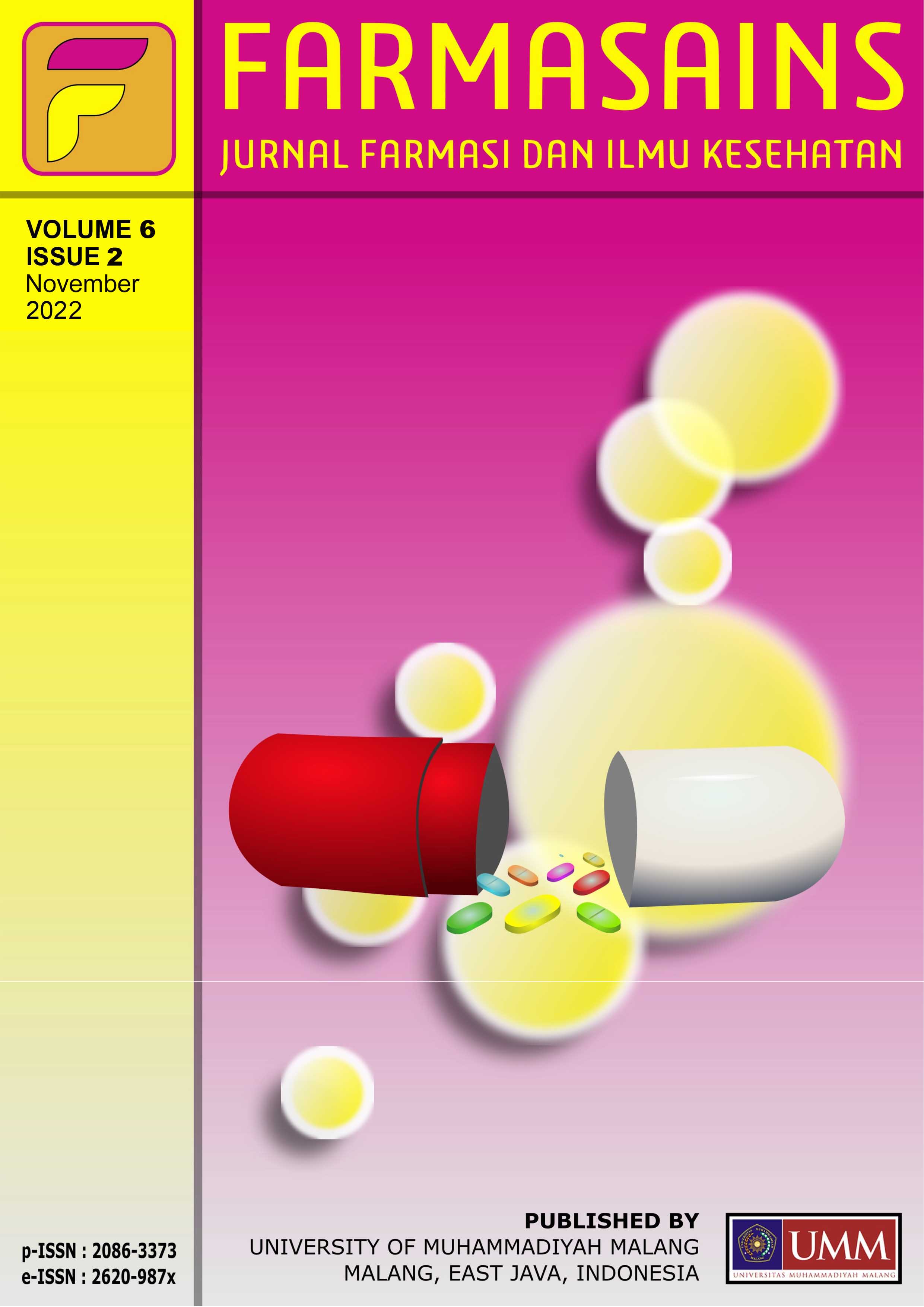A method validation and analysis of lead content in lipstick products sold in e-commerce using atomic absorption spectrophotometer (AAS)
DOI:
https://doi.org/10.22219/farmasains.v6i2.17250Keywords:
Lipstick, E-Commerce, Validation, Lead, AASAbstract
Lipstick is the most widely cosmetic that used to beautify the appearance of the face. Lipstick that safe to use has an amount of lead metal less than 20 ppm. This study aims to ensure that the analytical method used has been validated, to determine the metal content of lead in lipsticks that sold in e-commerce, to determine the average metal content of lead using an Atomic Absorption Spectrophotometer (AAS) and to determine the safety of the lipstick. The methods used to validation are determine linearity, accuracy, precision, LoD, and LoQ. Samples were obtained from e-commerce with criteria that had price less than IDR 17,500, had sales history at least 10,000 units and had shipments from within the country. Sample preparation was carried out by wet digestion method, then analyzed qualitatively by tube test and analyzed quantitatively by measuring its absorption using AAS. The results obtained from this study are the linearity of validation parameter is 0.9959, the percent accuracy is entirely in the range 80-110%, the percent precision is less than 11% and the LoD and LoQ numbers are 0.630 ppm and 1.908 ppm. The average levels of lead contained in lipsticks that sold in e-commerce for brands A to F are 33.285±0.918 ppm; 33.576±0.918 ppm; 35.029±0.918 ppm; 38.372±1.836 ppm; 39.390±0.918 ppm; and 32.994±0.918 ppm. Lipstick brands A, B, C, D, E, and F contain more than 20 ppm lead metal so they are not safe for daily use.
Downloads
References
Adliani, N., Nazliniwaty, N., & Purba D. (2012). Formulasi Lipstik Menggunakan Zat Warna dari Ekstrak Bunga Kecombrang (Etlingea elatior (Jack) R.M.Sm.). Journal of Pharmacetics and Pharmacology, 1(2), 87-94.
Agilent Technologies. (2017). Flame Atomic Absorption Spectrometry Analytical Methods. Mulgrave, Australia: Authors.
Badan Pengawas Obat dan Makanan. (2011). Peraturan Kepala Badan Pengawas Obat dan Makanan Nomor: HK.03.1.23.07.11.6662 Tentang Analisis Kosmetika. Jakarta: Authors.
González, A. G., & Herrador, M. Á. (2007). A practical guide to analytical method validation, including measurement uncertainty and accuracy profiles. TrAC Trends in Analytical Chemistry, 26(3), 227-238. doi: https://doi.org/10.1016/j.trac.2007.01.009
Maria, S. (2009). Penentuan Kadar Logam Besi (Fe) dalam Tepung Gandum Dengan Cara Destruksi Basah dan Destruksi Kering dengan Spektrofotometer Serapan Atom Sesuai Standar Nasional Indonesia (SNI) 01-3751-2006. (Undergraduate Thesis). Universitas Sumatera Utara, Medan, Indonesia.
Miller, J., & Miller, J. C. (2018). Statistics and chemometrics for analytical chemistry, 5th ed. Edinburk, UK: Pearson Education Limited.
Shrivastava, A., & Gupta, V. B. (2011). Methods for the determination of limit of detection and limit of quantitation of the analytical methods. Chronicles of Young Scientists, 2(1), 21-25. doi: https://doi.org/10.4103/2229-5186.79345
Saimima, I. D. S. (2013). Perlindungan Hukum Terhadap Konsumen Dalam Transaksi Jual Beli Secara Online. Jurnal Kajian Ilmiah Ubhara Jaya, 13(2), 317-330. doi: https://doi.org/10.31227/osf.io/r8vxq
Suleman, D. (2018). Faktor penentu keputusan konsumen Indonesia memilih tempat belanja disebuah e-commerce (Theory of Planned Behavior). Jurnal Doktor Manajemen, 1(1), 1-9.
Windaryati, L., Pranjono, & Banawa, G. S. (2013). Calibration of Carbon Analyzer LECO type IR-212. in T. Sujitno., Syarip., A. Taftazani., E. Supriyatni., Prayitno., M. V. Purwani., … & Jumari (Eds.), Particle Accelators. Proceeding of the National Seminar on Research and Management of Nuclear Equipment: Book II (pp. 249-252). Yogyakarta, Imdonesia.
Downloads
Published
How to Cite
Issue
Section
License
Copyright (c) 2021 Dian Prasasti, Divanda Liling Sasanti

This work is licensed under a Creative Commons Attribution 4.0 International License.
Authors who publish with this journal agree to the following terms:
a. Authors retain copyright and grant the journal right of first publication with the work simultaneously licensed under a Creative Commons Attribution License that allows others to share the work with an acknowledgement of the work's authorship and initial publication in this journal.
b. Authors are able to enter into separate, additional contractual arrangements for the non-exclusive distribution of the journal's published version of the work (e.g., post it to an institutional repository or publish it in a book), with an acknowledgement of its initial publication in this journal.
c. Authors are permitted and encouraged to post their work online (e.g., in institutional repositories or on their website) prior to and during the submission process, as it can lead to productive exchanges, as well as earlier and greater citation of published work (See The Effect of Open Access).













